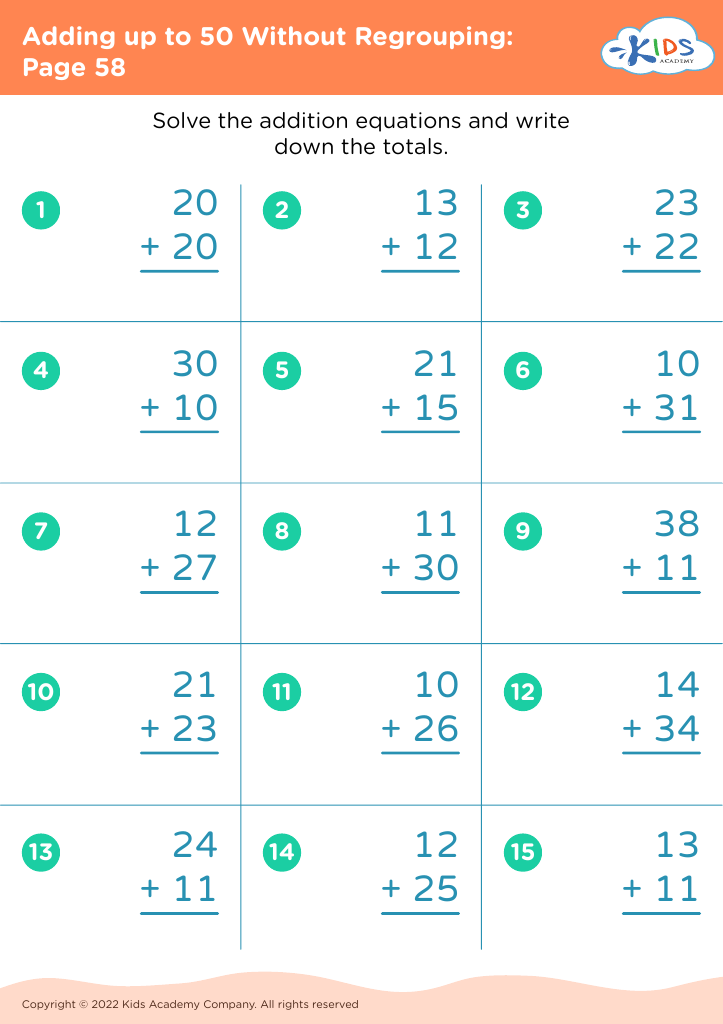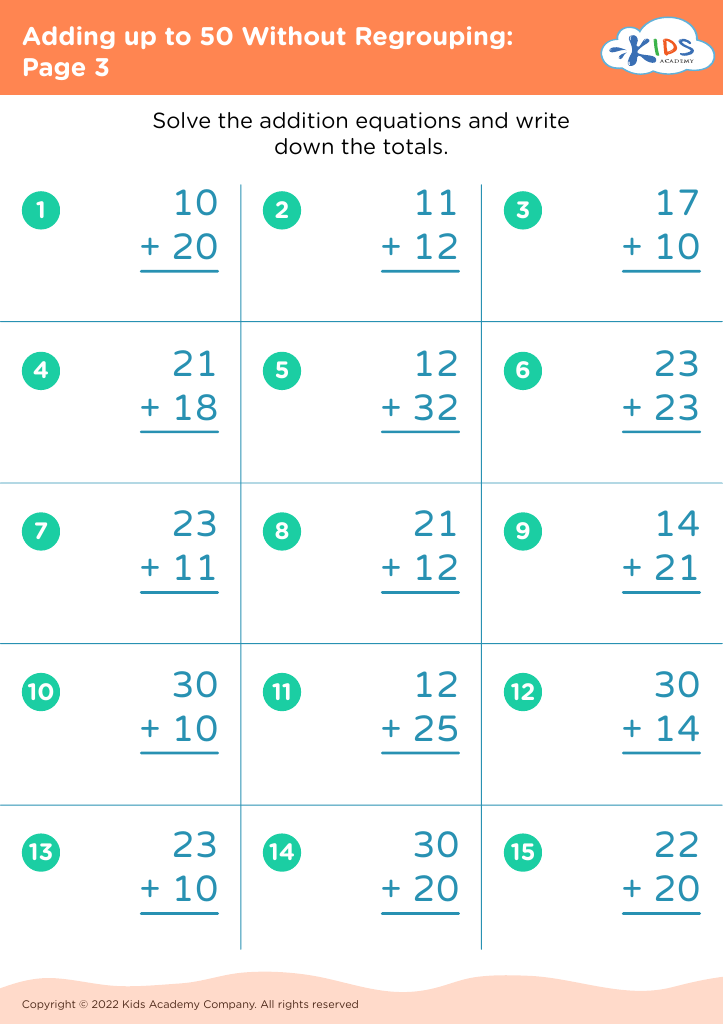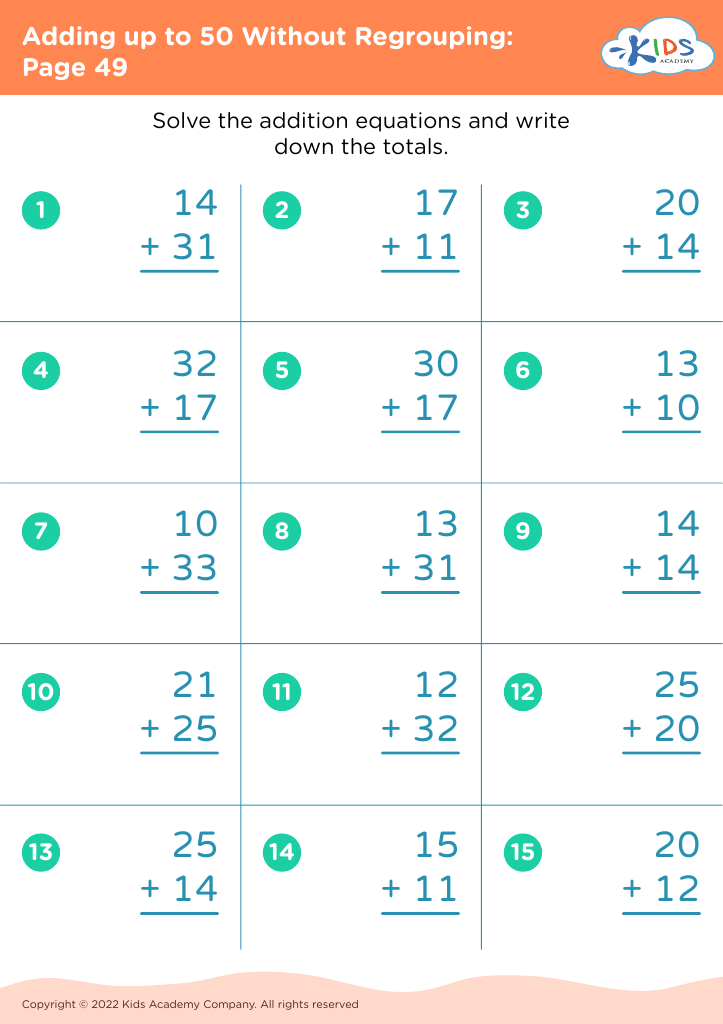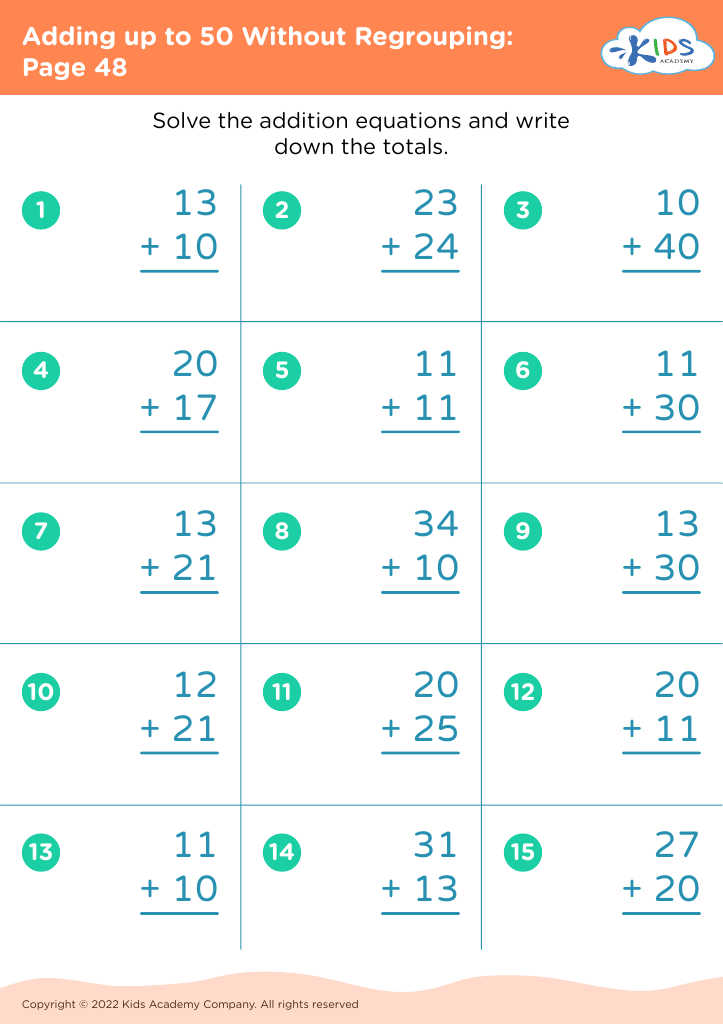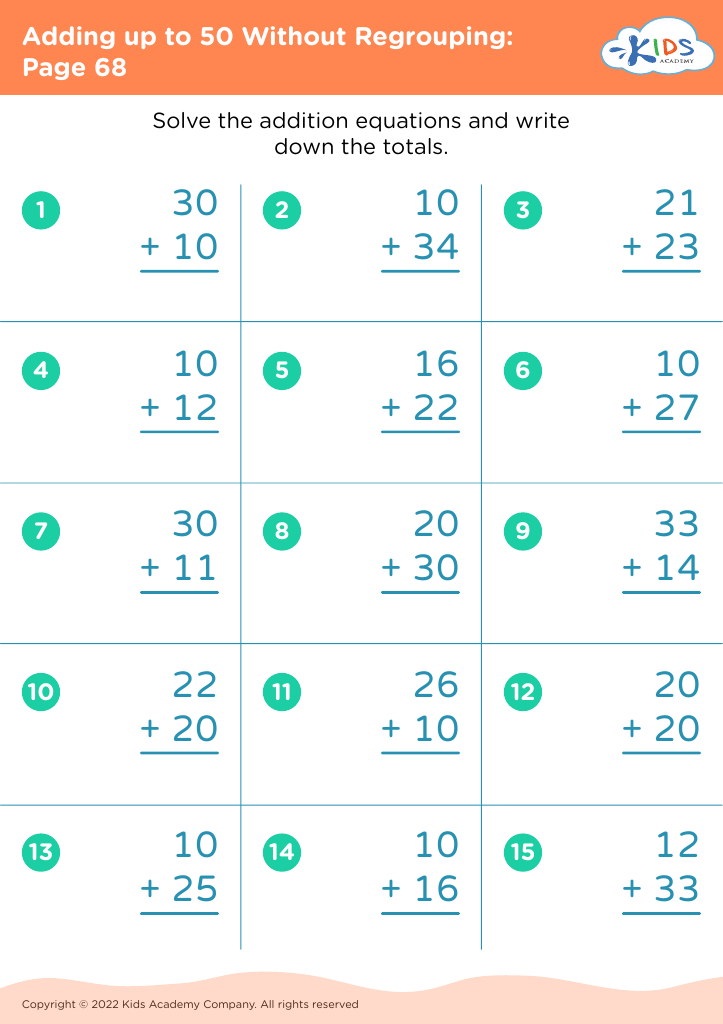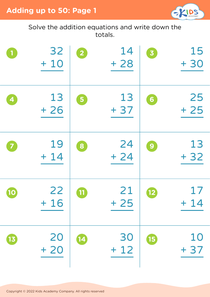Recognizing shapes Adding up to 50 Without Regrouping Worksheets for Ages 5-8
5 filtered results
-
From - To
Explore our engaging "Recognizing Shapes Adding Up to 50 Without Regrouping Worksheets" designed for children aged 5-8. These interactive worksheets combine shape recognition with basic addition skills, fostering a fun learning environment. Young learners will practice identifying various shapes while mastering addition problems that sum up to 50, all without regrouping. This resource encourages spatial awareness, boosts mathematical reasoning, and enhances problem-solving abilities. Perfect for classroom activities or at-home lessons, our worksheets provide clear instructions and colorful visuals to keep kids motivated and focused. Start your child's journey towards math confidence today with these educational tools that blend creativity and learning!
Recognizing shapes and mastering addition skills without regrouping are foundational concepts in early childhood education, making it vital for parents and teachers to prioritize these areas for children ages 5-8. First, shape recognition is more than just an art activity; it helps develop spatial awareness, critical thinking, and problem-solving skills. Understanding shapes lays the groundwork for more complex math concepts, geometry, and even real-world applications in architecture and design.
Second, the ability to add numbers up to 50 without regrouping promotes mental math skills, enhancing numerical fluency and confidence in young learners. This skill is essential for everyday situations, such as counting money or measuring ingredients, making math relatable and engaging. Furthermore, it differentiates itself from regrouping, which can sometimes overwhelm early learners. Mastery of these fundamentals supports a child's future academic success, sponsorship of logical reasoning, and instills an appreciation for math.
Including activities that foster these skills not only enriches children's cognitive development but also nurtures their enduring curiosity and love for learning. In sum, educators and parents should integrate both shape recognition and basic addition without regrouping into their teaching strategies to establish a comprehensive and enriching learning environment.

